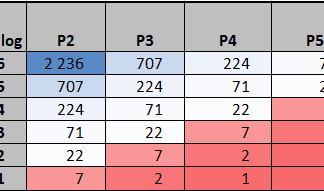Description
SIPOC for James, Our Supply Chain Director
Supplier:
- Raw Material Suppliers: Provide the essential raw materials required for production.
- Logistics Providers: Offer transportation and delivery services for materials and finished goods.
- Equipment Manufacturers: Supply the necessary machinery and tools for warehouse operations.
- Warehouse Staff: Manage the physical handling and storage of inventory.
Input:
- Raw Materials: Essential components needed for manufacturing products.
- Finished Goods: Completed products ready for distribution.
- Transportation Services: Logistics support for moving materials and products.
- Warehouse Space: Storage areas for raw materials, in-process inventory, and finished goods.
- Inventory Management Systems: Software and tools for tracking and managing inventory levels.
Process:
- Procurement of Raw Materials:
- Identifying and selecting suppliers.
- Negotiating contracts and purchase terms.
- Placing orders and managing supplier relationships.
- Logistics Coordination:
- Planning and managing transportation routes and schedules.
- Coordinating inbound and outbound logistics.
- Ensuring timely delivery of materials and products.
- Inventory Management:
- Monitoring inventory levels and conducting regular audits.
- Implementing inventory control systems (e.g., FIFO, JIT).
- Managing stock levels to prevent shortages and overstock.
- Distribution Planning:
- Scheduling and coordinating the distribution of finished goods.
- Managing warehousing and storage operations.
- Ensuring products are distributed to the right locations.
- Quality Control:
- Inspecting incoming materials and outgoing products for quality.
- Implementing quality assurance processes.
- Addressing any quality issues or discrepancies.
- Data Analysis and Reporting:
- Analyzing supply chain performance metrics.
- Generating reports on inventory levels, delivery times, and costs.
- Identifying areas for improvement and making data-driven decisions.
Output:
- Timely Delivery of Products to Customers:
- Ensuring that products are delivered on schedule to meet customer demand.
- Optimized Inventory Levels:
- Maintaining optimal stock levels to balance supply and demand.
- Reduced Supply Chain Costs:
- Implementing cost-saving measures and efficient processes.
- High-Quality Products:
- Delivering products that meet quality standards and customer expectations.
- Efficient Supply Chain Operations:
- Streamlining operations to enhance productivity and efficiency.
Customer:
- Production Team:
- Relies on timely delivery of raw materials for continuous production.
- Sales Department:
- Depends on product availability to fulfill customer orders.
- End Customers:
- Expect timely delivery of high-quality products.
- Senior Management:
- Looks for efficient supply chain operations to support overall business goals.
James, as the Supply Chain Director, ensures that inputs from various suppliers are efficiently processed to produce outputs that meet the needs and expectations of internal and external customers. His role involves overseeing the procurement, logistics, and inventory management processes to optimize the supply chain and support the company’s overall goals.





